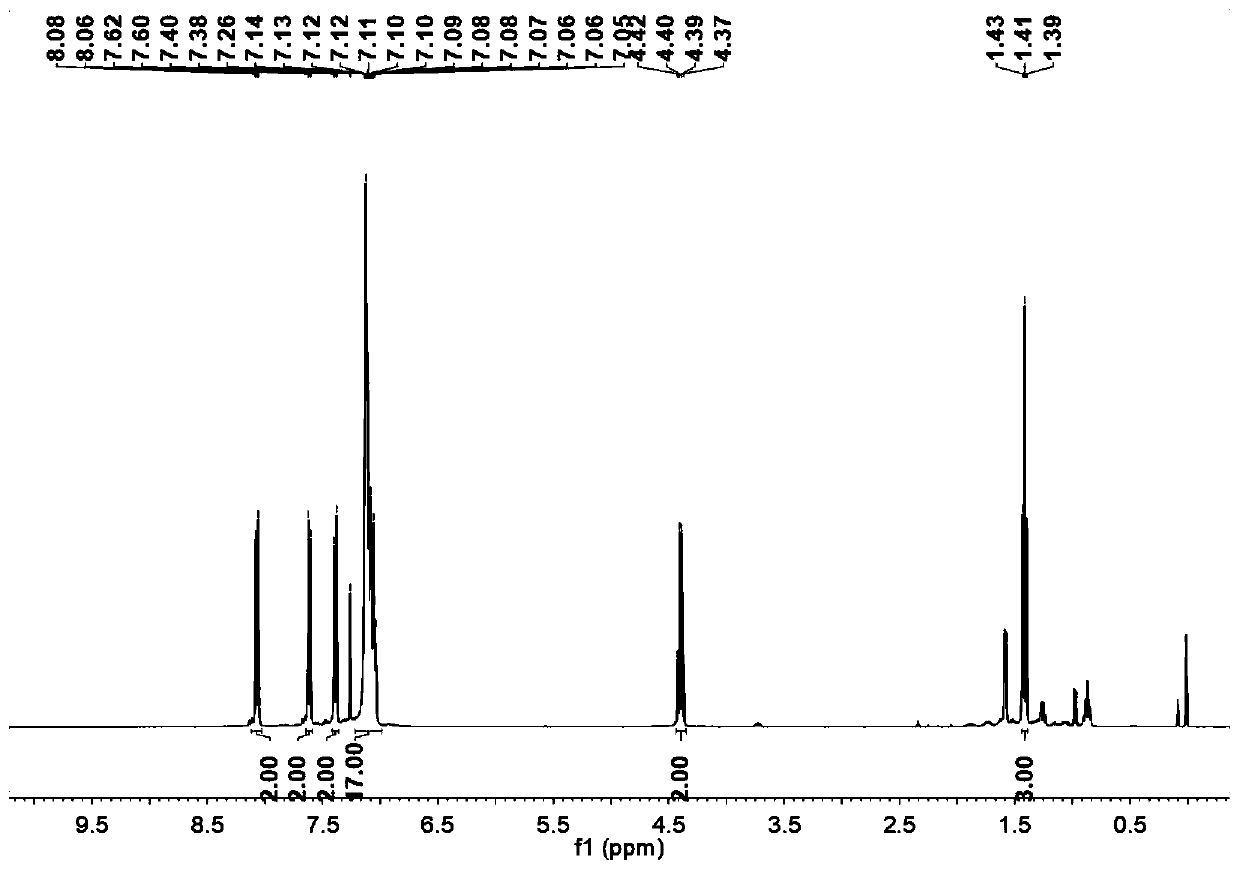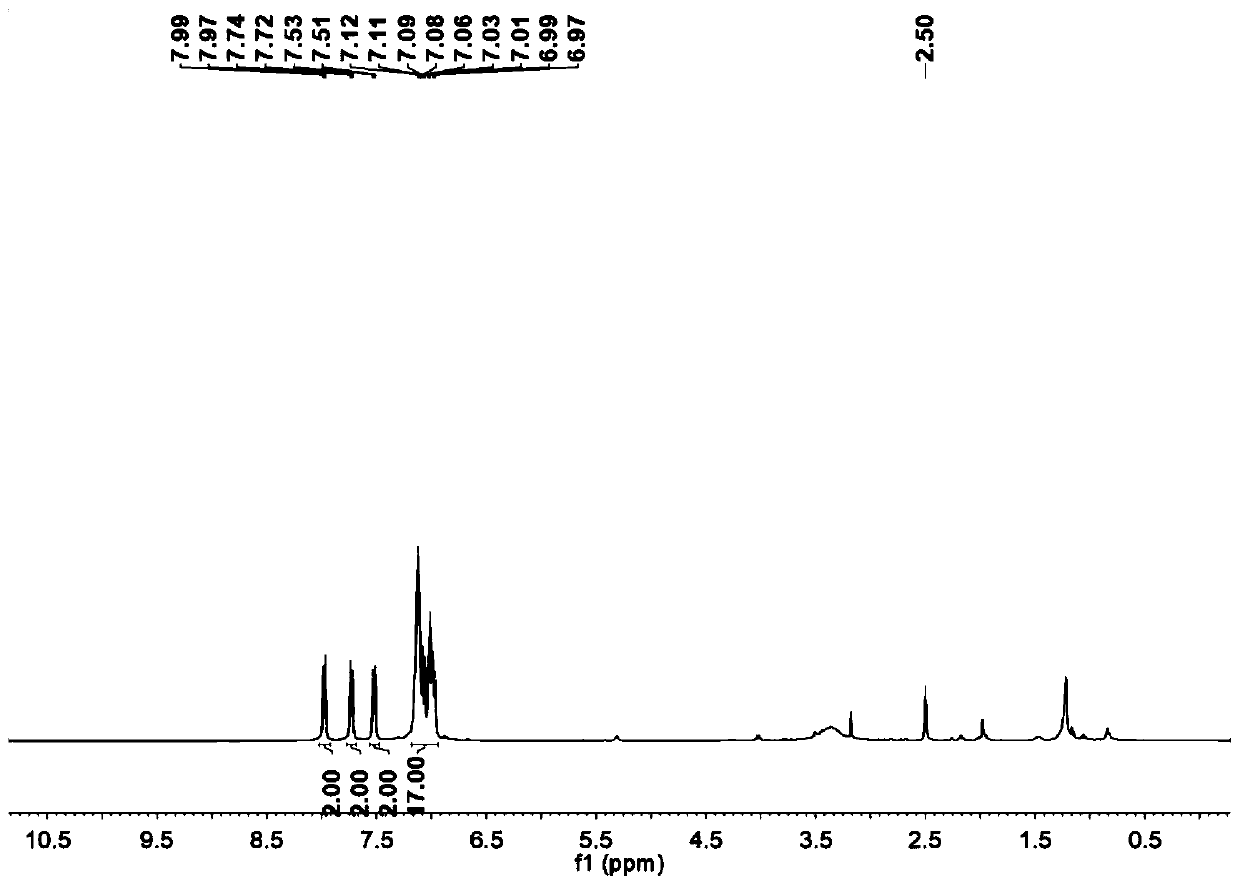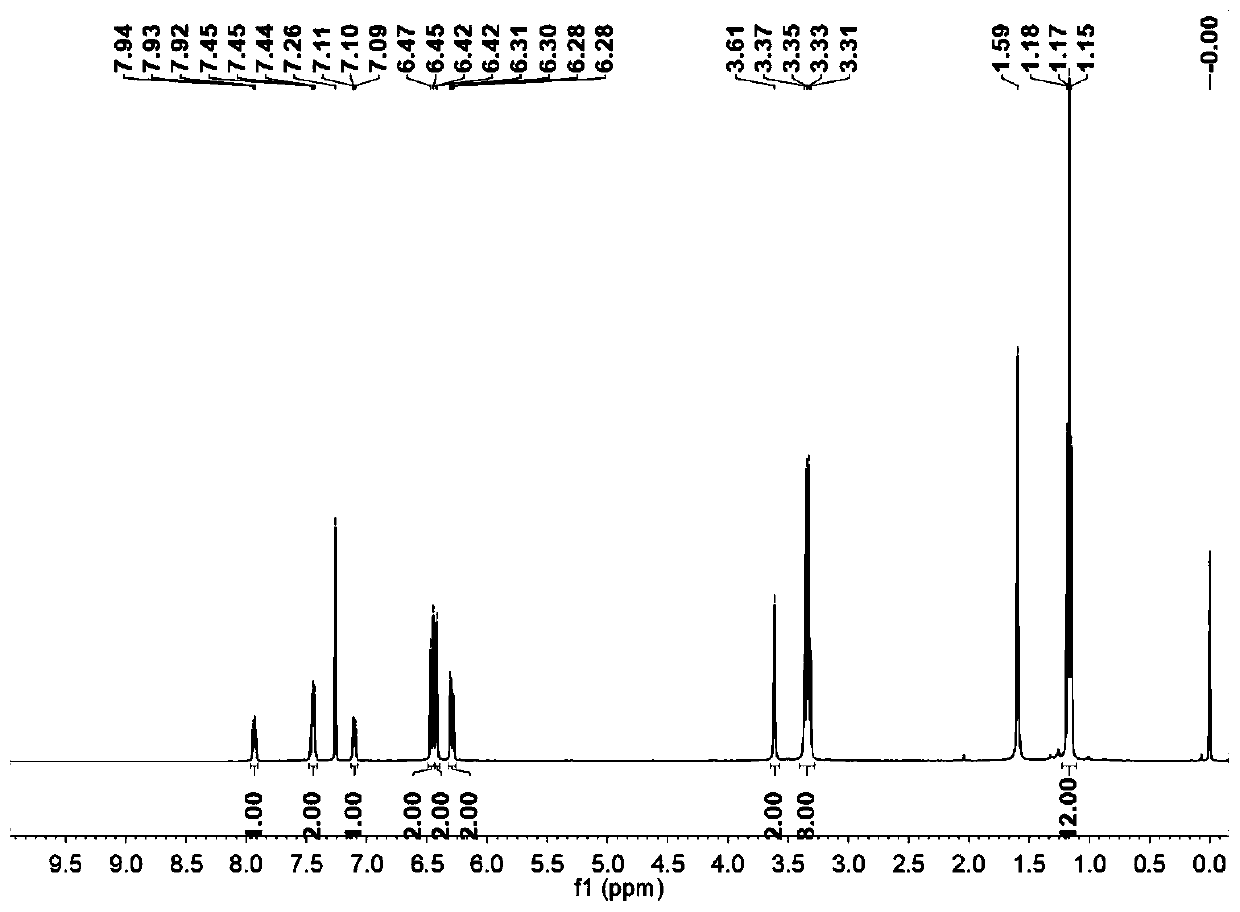Fluorescent probe for detecting hypochlorous acid, preparation method and applications thereof
A fluorescent probe and reaction technology, used in fluorescence/phosphorescence, chemical instruments and methods, luminescent materials, etc., can solve the problems of the selectivity and sensitivity of fluorescent probes that need to be improved, and achieve high sensitivity, good selectivity, and good The effect of the response
- Summary
- Abstract
- Description
- Claims
- Application Information
AI Technical Summary
Problems solved by technology
Method used
Image
Examples
Embodiment 1
[0058] This embodiment carries out the preparation of compound TPE-Et
[0059] Weigh the compound TPE-Br namely 1-(4-bromophenyl)-1,2,2-triphenylethylene (822mg, 2.0mmol) and 4-ethoxycarbonylphenylboronic acid (427mg, 2.2mmol) into the magnetic In the 100mL reaction eggplant flask with a stirrer, evacuate and fill with argon gas three times. The mixture of tetrahydrofuran (30 mL), ethanol (7.5 mL) and water (7.5 mL) deoxygenated by argon bubbling was introduced into the reaction eggplant bottle through a vacuum tube, and the third reaction was carried out under reflux at 110 ° C overnight under an argon atmosphere. TLC detects the degree of reaction. After the third reaction is complete, the organic solvent in the reaction solution is distilled off under reduced pressure, and the remaining reaction solution is extracted with ethyl acetate solution, the organic phases are combined and washed three times with aqueous sodium bicarbonate solution (10%) and saturated brine, and th...
Embodiment 2
[0062] Preparation of Compound TPE-COOH
[0063] The compound TPE-Et (480 mg, 1.0 mmol) and sodium hydroxide (120 mg, 3.0 mmol) prepared in Example 1 were weighed and placed in a 50 mL reaction eggplant bottle containing a magnetic stir bar. The mixture of tetrahydrofuran (10 mL) and water (10 mL) deoxygenated by argon bubbling was introduced into the reaction flask through a vacuum tube, and the fourth reaction was carried out under reflux at 90° C. overnight under an argon atmosphere. A large amount of solids were precipitated in the reaction solution, and the reaction degree was detected by TLC. After the fourth reaction was completed, the reaction solution was suction-filtered to obtain a solid, and then purified by column chromatography (the eluent was dichloromethane and petroleum ether at a volume ratio of 1:1) to obtain a white solid product, namely the compound TPE-COOH ( 360 mg), the purity was 97%, and the yield was 80%.
[0064] see figure 2 , is the proton nuc...
Embodiment 3
[0066] Preparation of compound RhoN
[0067] Weigh Rhodamine B (1329mg, 3.0mmol) into a 250mL reaction eggplant bottle containing a magnetic stirrer, add absolute ethanol (50mL) to dissolve. Add hydrazine hydrate (10mL) to the reaction solution, reflux overnight at 90°C, detect the degree of reaction by TLC, until the reaction is complete, remove the solvent by rotary evaporation under reduced pressure, and then purify by column chromatography (the eluent is a volume ratio of 20: 1 of dichloromethane and petroleum ether) to obtain a light red solid product, compound RhoN (600mg), with a purity of 98% and a yield of 43%.
[0068] see image 3 , is the hydrogen nuclear magnetic resonance spectrum of the compound RhoN prepared in Example 3 of the present invention. NMR data of compound RhoN: 1 H NMR (400MHz, CDCl 3 )δ=7.93(m,1H),7.45(m,2H),7.10(m,1H),6.46(d,J=8.8Hz,2H),6.42(d,J=2.4Hz,2H),6.29( dd,J=2.5,8.8Hz,2H),3.61(s,2H),3.34(q,J=7.0Hz,8H),1.17(t,J=7.0Hz,12H).
PUM
 Login to View More
Login to View More Abstract
Description
Claims
Application Information
 Login to View More
Login to View More - R&D
- Intellectual Property
- Life Sciences
- Materials
- Tech Scout
- Unparalleled Data Quality
- Higher Quality Content
- 60% Fewer Hallucinations
Browse by: Latest US Patents, China's latest patents, Technical Efficacy Thesaurus, Application Domain, Technology Topic, Popular Technical Reports.
© 2025 PatSnap. All rights reserved.Legal|Privacy policy|Modern Slavery Act Transparency Statement|Sitemap|About US| Contact US: help@patsnap.com



